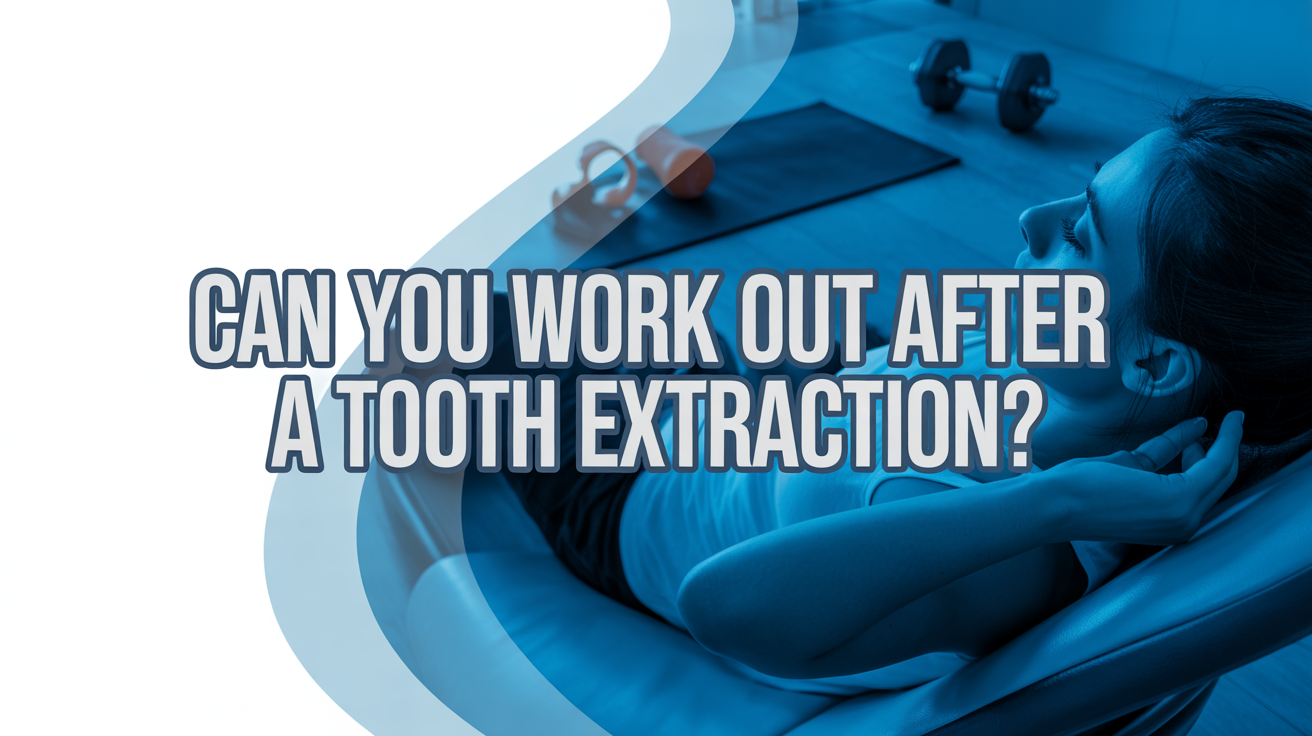Undergoing a tooth extraction, whether for wisdom teeth or another reason, requires careful recovery to ensure proper healing and avoid complications. A common question is, Can I work out after a tooth extraction? This article explores the safety, risks, and guidelines for resuming physical exercise post-extraction, structured using the Koray SEO framework for clear, authoritative content.
Tooth extraction involves removing a tooth from its socket, often due to impaction, decay, or crowding. Post-procedure, a blood clot forms at the extraction site, which is critical for healing. Physical activity, especially strenuous exercise, can disrupt this clot, leading to complications like dry socket (alveolar osteitis) or delayed healing. Recovery typically takes 7–10 days, with the first 48–72 hours being the most critical.
Is It Safe to Work Out After a Tooth Extraction?
The safety of working out after a tooth extraction depends on the timing, type of exercise, and individual healing progress. Dentists generally advise against physical activity in the early recovery phase to minimize risks.
-
First 24–48 Hours: Avoid all forms of exercise, including light activities like walking or stretching. Physical exertion increases blood pressure and heart rate, which can dislodge the blood clot, leading to dry socket—a painful condition where the socket’s protective layer is lost. Rest is crucial during this period to stabilize the clot.
-
Days 3–5: If healing is progressing well—no swelling, pain, or bleeding—you may gradually resume light activities, such as gentle walking or light stretching. Avoid high-intensity workouts, heavy lifting, or exercises that involve bending over, as these can increase blood flow to the head and disrupt healing.
-
After 5–7 Days: Most patients can return to moderate exercise, like jogging or light weightlifting, if the extraction site is healing without complications. Full-intensity workouts, such as CrossFit, running, or contact sports, should typically wait until 7–10 days post-extraction, or longer for complex cases like wisdom tooth surgery.
Risks of Exercising Too Soon
Exercising prematurely can lead to several complications:
-
Dry Socket: Vigorous activity can dislodge the blood clot, exposing the bone and nerves, causing severe pain and requiring dental intervention.
-
Increased Bleeding: Physical exertion elevates blood pressure, which may cause prolonged bleeding at the extraction site.
-
Infection: Sweating during workouts can introduce bacteria to the surgical site, especially if oral hygiene is compromised.
-
Delayed Healing: Stress on the body from exercise can divert energy from the healing process, prolonging recovery.
Guidelines for Safe Exercise Post-Extraction
To safely resume working out, follow these dentist-recommended guidelines:
-
Rest Initially: Take complete rest for at least 48 hours, avoiding any activity that raises your heart rate.
-
Monitor Symptoms: Before exercising, ensure there’s no swelling, excessive pain, or bleeding. Persistent discomfort may indicate complications like dry socket or infection.
-
Start Gradually: Begin with low-impact activities, such as walking or yoga (avoiding inverted poses), and monitor how your body responds.
-
Stay Hydrated: Drink plenty of water, but avoid using straws, as suction can dislodge the clot.
-
Avoid Contact Sports: Activities like boxing or soccer, which risk facial trauma, should be avoided for at least 2–3 weeks to protect the healing site.
-
Follow Post-Op Instructions: Adhere to your dentist’s advice, including maintaining oral hygiene, taking prescribed medications, and avoiding irritants like smoking or alcohol.
Factors Influencing Recovery
Several factors affect how soon you can exercise:
-
Extraction Complexity: Simple extractions heal faster than surgical ones (e.g., impacted wisdom teeth), which may require longer rest.
-
Individual Health: Conditions like diabetes or smoking can slow healing, necessitating a longer wait before exercising.
-
Anesthesia Type: General anesthesia may cause lingering fatigue, requiring extended rest compared to local anesthesia.
When to Consult Your Dentist
Before resuming exercise, consult your dentist if you experience:
-
Persistent or worsening pain
-
Swelling or redness at the extraction site
-
Prolonged bleeding or oozing
-
A bad taste or odor in the mouth, which may indicate infection
These symptoms could signal complications requiring professional attention.
Working out after a tooth extraction is generally safe after 5–7 days for light activities, with full workouts resuming after 7–10 days, depending on healing progress. Avoid exercise for the first 48–72 hours to prevent dry socket, bleeding, or infection. Always follow your dentist’s post-operative instructions and monitor your symptoms before returning to physical activity. For personalized advice, consult your dental professional to ensure a smooth recovery while maintaining your fitness routine.
